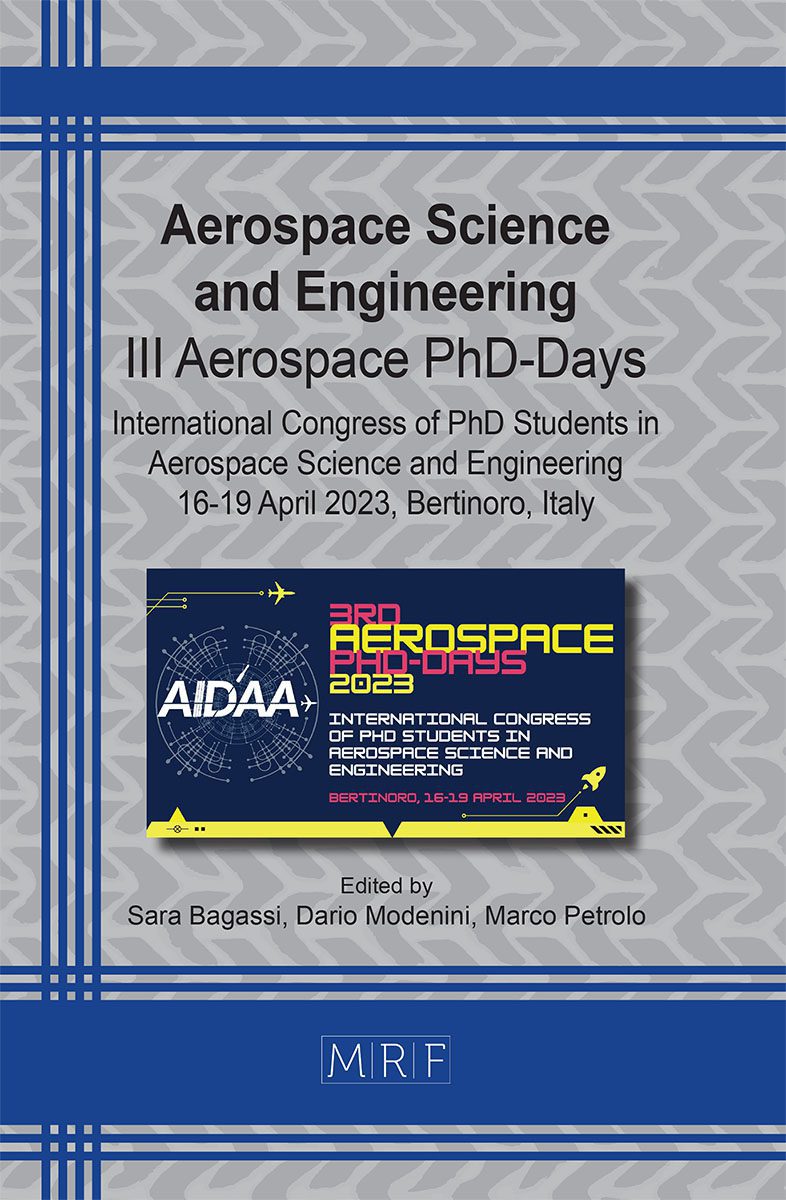Acoustic metamaterial design for aeronautical purposes
Giuseppe Catapane
download PDFAbstract. Labyrinth-shape quarter wavelength tubes are numerically studied under plane wave excitation, with analytical comparison. These labyrinth resonators (LRs) are tuned at 60, 90 and 120 Hz, and their sound absorption response exhibits maximum peak at those frequencies with high fidelity and performance. These objects can absorb tonal sources at very low frequencies, with an incredibly competitive thickness, resulting in the possibility of considering them for the design of acoustic liners for an aerospace engine, but also for the automotive and naval industries. They are put together to form an acoustic metamaterial which exhibits multiple tonal peaks, demonstrating that the performance of each resonator is not affected by their coupling.
Keywords
Acoustic Metamaterials, Sound Absorption, Noise Suppression
Published online 9/1/2023, 6 pages
Copyright © 2023 by the author(s)
Published under license by Materials Research Forum LLC., Millersville PA, USA
Citation: Giuseppe Catapane, Acoustic metamaterial design for aeronautical purposes, Materials Research Proceedings, Vol. 33, pp 91-96, 2023
DOI: https://doi.org/10.21741/9781644902677-14
The article was published as article 14 of the book Aerospace Science and Engineering
![]() Content from this work may be used under the terms of the Creative Commons Attribution 3.0 license. Any further distribution of this work must maintain attribution to the author(s) and the title of the work, journal citation and DOI.
Content from this work may be used under the terms of the Creative Commons Attribution 3.0 license. Any further distribution of this work must maintain attribution to the author(s) and the title of the work, journal citation and DOI.
References
[1] L. Cao, Q. Fu, Y. Si, B. Ding, and J. Yu, “Porous materials for sound absorption,” Composites Communications, vol. 10. Elsevier Ltd, pp. 25–35, Dec. 01, 2018. https://doi.org/10.1016/j.coco.2018.05.001.
[2] X. Q. Ma and Z. T. Su, “Development of acoustic liner in aero engine: a review,” Science China Technological Sciences, vol. 63, no. 12. Springer Verlag, pp. 2491–2504, Dec. 01, 2020. https://doi.org/10.1007/s11431-019-1501-3.
[3] A. Magnani, C. Marescotti, and F. Pompoli, “Acoustic absorption modeling of single and multiple coiled-up resonators,” Applied Acoustics, vol. 186, Jan. 2022. https://doi.org/10.1016/j.apacoust.2021.108504.
[4] C. Zwikker and C. W. Kosten, “Sound Absorbing Materials,” Elsevier Publishing company, 1949.
[5] Giuseppe Catapane, Dario Magliacano, Giuseppe Petrone, Alessandro Casaburo, Francesco Franco, and Sergio De Rosa, “Labyrinth Resonator Design for Low-Frequency Acoustic Meta-Structures,” in Recent Trends in Wave Mechanics and Vibrations, 2022, pp. 681–694. https://doi.org/10.1007/978-3-031-15758-5_70.
[6] N. Atalla and F. Sgard, “Modeling of perforated plates and screens using rigid frame porous models,” J Sound Vib, vol. 303, no. 1–2, pp. 195–208, Jun. 2007. https://doi.org/10.1016/j.jsv.2007.01.012.
[7] “IS0 10534-2 1998: Acoustics-Determination of sound absorption coefficient and impedance in impedance tubes-Part 2: Transfer-function method,” 1998.































